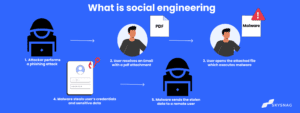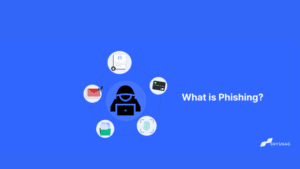What is Baiting?

Baiting is a type of social engineering attack in which the attacker entices the victim to do something that will lead to the victim’s demise. Anything that the attacker thinks the victim will find appealing can be used as bait, including a free present, a chance to win a prize or a promise of something the victim wants.
Attacks using baiting techniques can occur offline as well as online. Utilizing storage devices like flash drives and laptops is one of the most popular offline luring attacks. These tools might be placed in plain sight for victims to use by attackers. The devices in most cases contain malicious code that’s automatically executed when they’re plugged into a computer.
Researchers from the Universities of Michigan, Illinois, and Google revealed that between 45% and 98% of USB drives are plugged in accidentally.
In this article, will be looking at some of the common baiting techniques cybercriminals use and how to protect yourself from falling prey.
What is the main purpose of Baiting?
In cybersecurity, the main purpose of baiting is to deceive users into disclosing private information or allowing malware to infiltrate their systems.
Attackers can trick people into opening dangerous links or attachments, providing sensitive information on fake websites, or installing malicious software on their computers by using social engineering techniques. Attackers may be able to acquire private information, set up malware, or even take over the victim’s computer by doing this.
Ways Baiting takes place
There are many ways that baiting can take place in cybersecurity. Some common methods include:
- Creating fake websites that look like they offer something desirable, such as free downloads or access to special content. When users try to access these websites, they are instead redirected to a site that downloads malware onto their computers.
- Sending emails that appear to be from a legitimate source, but contain a link or attachment that leads to a malicious site.
- Creating social media accounts that pretend to be a person or organization that users would want to follow. These accounts then post links to malicious websites or downloadables.
- Creating online ads that promise a freebie or some other desirable offer, but instead, lead to a malicious website.
How to protect yourself from Baiting attacks
There are a few things you can do to protect yourself from baiting attacks:
- Unsolicited emails should be avoided, especially those that contain links or attachments.
- Be wary of any email that requests that you open an attachment or click on a link.
- Avoid opening attachments or clicking links from senders you don’t know.
- Any email with spelling or grammar mistakes should be avoided.
- Pay attention to any emails that convey a sense of urgency or anxiety.
- Don’t be afraid to get in touch with the sender of an email if you have any doubts about its legitimacy.
- Always update your antivirus and anti-malware software.
- Create strong passwords and periodically backup your data as part of basic cyber hygiene.
Most Common Baiting Techniques
Click a link to access freebies
You will be presented with enticing offers of free downloaded content, whether through advertisements, emails, or social media. They will make all downloadable content available to users for free, including music, movies, digital audio players, and other media.
Infected USB devices
They behave like trojan horses, carrying out attacks by making use of insecure computer resources such as storage media or USB devices that are then discovered by victims in a coffee shop. When the victims insert the USB drive into their PCs, the disk attacks the machine like a real-world Trojan horse. The victims of this attack are unaware of the wicked activities that are being carried out in the background.
Conclusion
Skysnag’s automated DMARC solution strengthens protection against baiting attacks by confirming that an email message came from the domain it claims to have come from. Skysnag generates DMARC reports for you that aid in investigating potential security problems and identifying potential risks from baiting attacks. Get started with Skysnag and sign up using this link.





